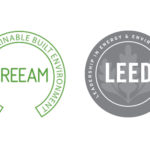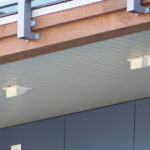
A high efficiency furnace is determined by its Annual Fuel Utilization Efficiency (AFUE). This is a ratio between the amount of heat energy produced compared to the amount of natural gas consumed. The higher the number, the more efficient the furnace is.
Conventional furnaces are not capable of an AFUE reading above 90%, but the new high-efficiency type of furnace referred to as a “condensing” furnace can achieve up to 98% AFUE.
How do they do this? Well, the key is the heat extraction capability of the condensing furnace is so much greater than that of the conventional kind. Compare this to conventional furnaces, which heat up quickly allowing hot gases to escape up the chimney before the heat exchanger is able to extract all the heat.
But in a condenser type, heat is extracted for a longer time allowing the gases to cool. There are two heat exchangers:
- One is for the primary exchange where most of the heat is extracted,
- The other is a secondary that deals with the condensed gases. The secondary continues to extract heat until water vapour that forms from the combustion of hydrogen in the fuel condenses and drips out.
These two types of furnaces are alike in that they use similar gas burners, but high efficiency ones use electronic ignition. This means gas is not wasted running a pilot light.
Also, they often have two-stage heating, which means they use less energy during milder temperatures and a variable speed blower that can run at different speeds depending on demand.
How vents help airflow
Any furnace needs to draw in air but high efficiency ones have sealed combustion so they need to draw in fresh air from the outside. Airflow into and out of the system must be carefully maintained year round, and quality plastic vents can help with that process.
The furnace can also be coupled with a heat recovery ventilator (HRV) or an energy recovery ventilator (ERV). These are designed to pull air into or out of a house and allow heat to exchange between the outgoing stale air to the incoming fresh air.
A good system will transfer 70-80% of the heat energy. Outside, a plastic vent or hood will provide a durable, leak free cover, while allowing plenty of air to pass through the intake and exhaust ports.
An ERV adds the capability of exchanging humidity between moist outgoing air and dry incoming air, which can be especially useful during cold Canadian winters.
How a boiler system works
What about a boiler system? There are similar high efficiency boilers as well that work by condensing water vapour from the combustion process back into liquid water.
When you think about it, there is little point in having a high efficiency furnace or boiler if the rest of the system is inefficient. Often, ductwork is to blame – think of s sloppy connections and joints. Especially in crawl spaces and attics this can mean leaking large amounts of warm air. All joints should be sealed with foil tape or mastic sealant at all the connections in the ductwork, including where the ducts attach to the registers.



